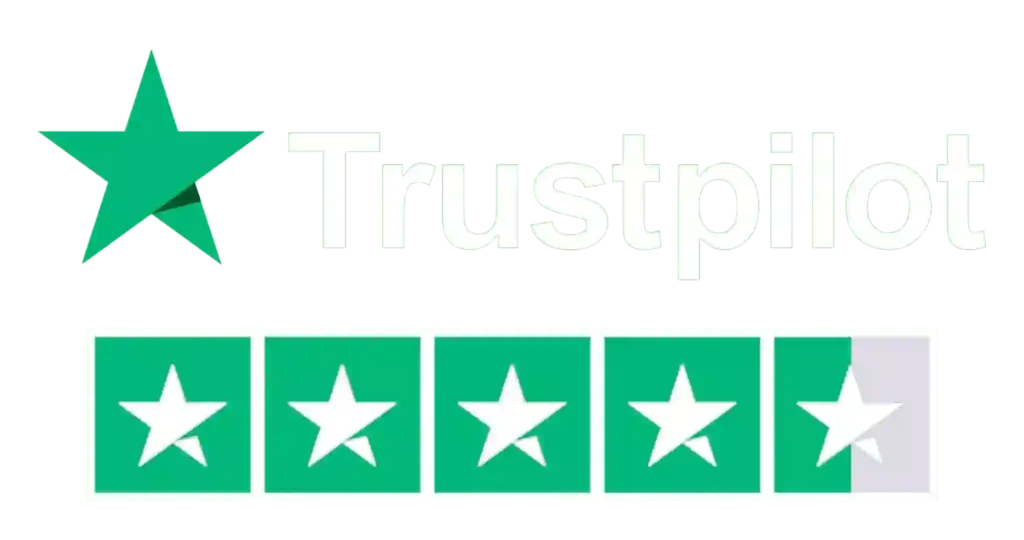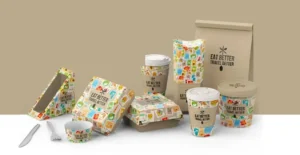
Custom food packaging is vital for food brands to succeed in today’s market. In this comprehensive guide, we’ll delve into the transformative potential of custom food packaging and how it can revolutionize your brand.
In an era where consumers are bombarded with choices, standing out is no longer an option; it’s a necessity. Custom food packaging allows your brand to do just that. It’s the embodiment of your identity, encapsulating your values, aesthetics, and commitment to quality in a tangible form.
Moreover, it serves as a powerful marketing tool. Imagine a quiet salesperson on the shelf. It attracts customers with its unique design, attractive visuals, and a promise of what’s inside. But it’s not all about aesthetics. Custom food packaging is also about functionality, ensuring your product reaches consumers in optimal condition.
Next, we will explore the numerous benefits of personalized food packaging. These advantages include increasing brand awareness and minimizing harm to the environment. It’s time to unlock the potential of packaging that’s as unique as your brand.
The Power of Custom Food Packaging
Custom food packaging is a dynamic force that can make or break a brand in today’s fiercely competitive market. In this section, we will discuss the impact of packaging on consumer perception. Additionally, we will explore how custom food packaging can help your brand to differentiate itself.
Packaging is not just a shell; it’s a persuasive storyteller. It conveys your brand’s essence and ethos to consumers before they even taste your product. Your choice of materials, colors, and design, along with high-quality food packaging supplies, shows your dedication to quality and innovation.
Consider the psychological impact. A well-crafted package triggers an costemotional response, fostering a connection between the consumer and the brand. It evokes curiosity and desire, setting the stage for a memorable experience.
Now, what sets custom food packaging apart? It’s a tailor-made solution that aligns seamlessly with your brand identity. Off-the-shelf options may do the job, but they need more uniqueness that can captivate consumers. Customization allows you to tell your brand’s story in a way that’s genuinely yours.
To achieve this, partnering with reputable custom food packaging companies is vital. They possess knowledge and imagination. You can create packaging thanks to this. Because of this, packaging can be made. In addition to safeguarding your product, the packaging tells a compelling story about your brand. We’ll go further into this revolutionary field of personalized packaging in the ensuing sections.
Types of Custom Food Packaging
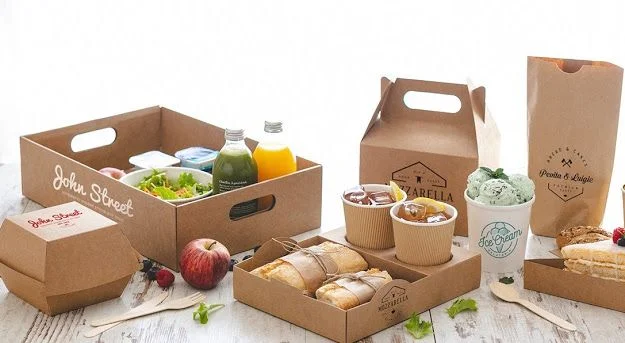
Any food business must have customized food packaging. In Section 2, we explore different types of food packaging and compare custom food boxes with custom food containers. Let’s embark on this journey to understand which one aligns better with your business needs.
Understanding the Variety of Custom Packaging Options
When it comes to custom food packaging, you’ll find an array of food packaging options at your disposal. From custom food boxes and containers to stand up pouches and bags, the choices are vast. Each option boasts its own unique set of characteristics, making it essential to comprehend their pros and cons.
Custom food boxes are favored for their durability and eye-catching presentation. They come in various shapes and sizes, allowing you to tailor them to your specific product. These boxes are an excellent choice for food items like pastries, cakes, and specialty foods.
On the other hand, custom food containers offer practicality and convenience. They are usually made of plastic or glass and are great for sealing items like soups, salads, or pre-packaged meals. Their reusability also appeals to eco-conscious consumers.
Custom Food Boxes vs Containers: Which Is Right for Your Business?
To determine the ideal packaging for your business, consider your product’s nature and your target audience. Custom Chocolate Boxes can help you showcase your fancy baked goods or fancy chocolates. They provide a platform for you to display your creations and establish your brand.
If your business sells meals or takeout, choosing custom food containers can be a practical option. They keep your dishes fresh and allow for easy reheating, catering to busy individuals looking for convenient meal solutions.
Benefits of Custom Food Packaging
When it comes to the food business, custom food packaging isn’t just a wrapper; it’s a strategic choice with numerous advantages. In this section, we’ll uncover how personalized packaging can revolutionize your brand.
Enhancing Brand Identity with Custom Designs supplies
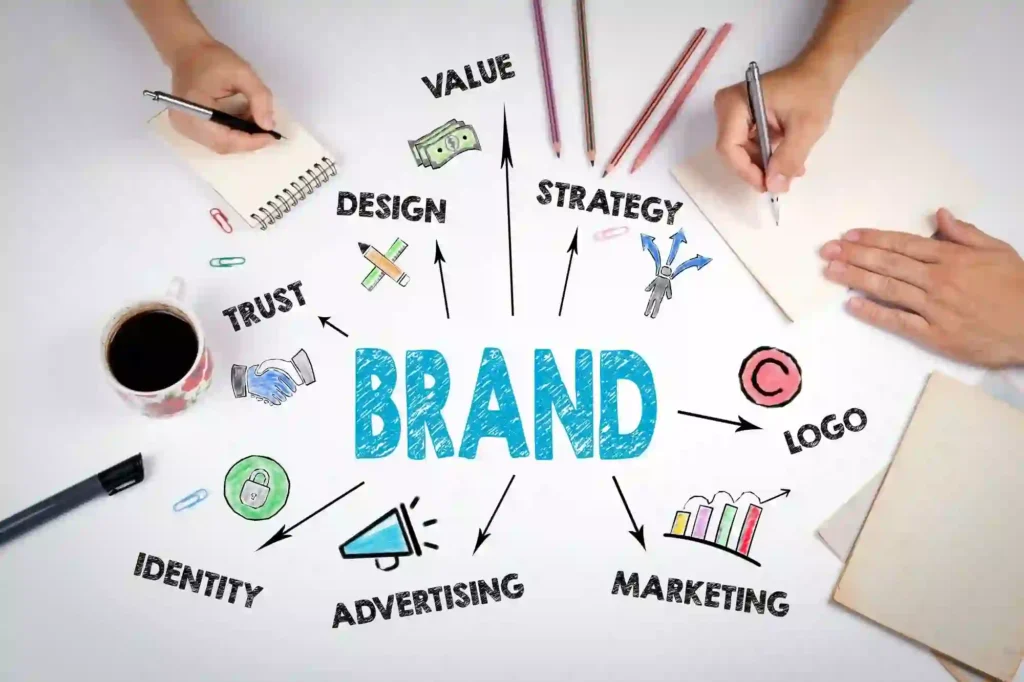
Your packaging isn’t merely a vessel; it’s your brand’s silent ambassador. Unique food packaging boxes with a logo are your canvas for storytelling. Crafted with precision, they convey your brand’s essence, fostering instant brand recognition. In a sea of generic options, your unique designs become a beacon.
But it’s not just about aesthetics; it’s also about functionality. High-quality materials ensure your packaging doesn’t just look good but also performs. Your customized boxes can be tailored to fit your food product perfectly, guaranteeing its safety and freshness.
Customization for Specific Products and Needs
One size doesn’t fit all in the food world. Different products demand different packaging solutions. Customization really shines in this situation. You can choose custom packaging for food that aligns with your eco-friendly ethos, appealing to the environmentally conscious consumer base.

Whether you’re packaging delicate confections or hearty meals, custom food boxes can be designed to suit your specific needs. From securing freshness to ensuring safety, they’re adaptable to your requirements.
Embrace printed food packaging to make your product stand out on the shelves. Your packaging can tell a story – of quality, care, and attention to detail. And most importantly, it speaks to the consumer’s desire for something exceptional.
As we have found, custom food packaging is your ticket to leaving an indelible mark. It’s a blend of artistry and practicality, delivering not only your product but your brand’s essence into the hands of consumers. So go ahead and investigate the many high-quality custom solutions to take your food company to new heights.
Designing Your Custom Food Packaging
Crafting custom printed food boxes isn’t just about wrapping your product; it’s a canvas for your brand’s story. In this section, we’ll explore key design elements that elevate your packaging and the art of incorporating your brand identity.
Key Design Elements for Effective Custom Packaging
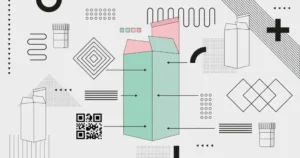
Effective custom food packaging design involves a delicate blend of creativity and strategy. Start with the basics: colors, fonts, and imagery. The color palette should resonate with your product, evoking emotions and desires. Fonts should be legible yet unique, and imagery should tell a visual tale.
Consider the tactile experience, too. The texture is necessary, such as the silky feel of high-quality paper or the organic feel of eco-friendly materials. These sensory elements engage the consumer on a deeper level.
When it comes to layout, simplicity often triumphs. Bespoke food packaging that’s cluttered may overwhelm you, so strive for balance. White space can enhance readability and visual appeal.
Incorporating Your Logo and Branding Elements
Your logo is your brand’s signature, and it should take center stage on your packaging. Ensure it’s prominently placed, legible, and aligned with your brand’s voice.
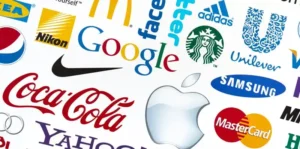
Brand colors and imagery should seamlessly flow from your logo to the rest of your packaging. Consistency in these elements fosters brand recognition. Use them strategically to draw the eye to essential information, like product details and benefits.
Consider the practicality of your design. Ensure all vital information about your food product is readily accessible and complies with regulations. Customers should know what they’re getting and feel confident in its quality and safety.
In the end, designing your custom food boxes is an art that merges aesthetics with functionality. Every element, from color to texture to logo placement, plays a vital role in conveying your brand’s essence. By harmonizing these aspects, your packaging becomes a compelling storyteller, inviting consumers into your culinary world.
Custom Food Packaging for Different Industries
Custom food packaging isn’t a one-size-fits-all solution. It’s a tailored art, adapting to the unique needs of various industries. In this section, we explore how custom packaging serves frozen foods, produce, and diverse business sectors.
Tailoring Packaging for Frozen Foods
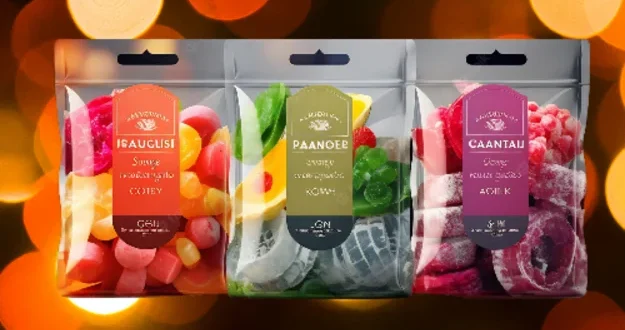
Custom frozen food packaging plays a crucial role in preserving the freshness of frozen delights. It’s not just about keeping temperatures low; it’s about maintaining quality and taste. These packages are designed to protect and preserve your food in cold weather. Your meals will be transported or stored safely and in good condition thanks to this.
Meeting the Demands of the Produce Industry
Produce is a delicate and perishable commodity. Custom packaging for this industry is a delicate balance between protection and presentation. It must keep the produce fresh while showcasing its natural beauty.
Custom produce packaging offers eco-friendly options, reducing waste and meeting sustainability demands. It’s designed to provide ventilation, maintain humidity levels, and prevent damage during transport.
Unique Packaging Solutions for Various Businesses
Custom food packaging extends its embrace to various businesses, from bakeries to restaurants and beyond. For any particular demand, it offers a wide choice of solutions.
Custom bakery packaging means boxes that preserve the delicate art of pastry. For restaurants, it’s takeaway containers that keep flavors intact. For every business, it’s a chance to tell a story through packaging, fostering brand recognition and loyalty.
Custom packaging is about making a statement with eco-friendly materials or luxurious, high-quality options for the environment-conscious. It’s about making sure your food gets to the customer safely and shows off your brand.
Finding The Right Food Packaging Partner
A crucial choice that could have a significant impact on your business is choosing the best bespoke food packaging partner. In this part, we will discuss helpful tips for selecting the best packaging supplier. Additionally, we will examine the advantages of comparing local options with online choices.
5 Tips for Selecting the Best Packaging Supplier
- Quality Comes First: Your brand deserves nothing less than high-quality packaging. Ensure the supplier uses top-notch materials and color printing processes to maintain the integrity of your products.
- Diverse Offerings: Opt for a supplier that can offer a wide range of custom solutions. From custom food boxes to printed food packaging, versatility is vital to meeting your unique needs.
- Eco-Friendly Commitment: In today’s environmentally conscious world, sustainability matters. Look for a partner who offers eco-friendly packaging options, reflecting your commitment to a greener future.
- Food Safety Compliance: Your chosen supplier should prioritize food safe materials and adhere to industry standards, ensuring your products remain fresh and contamination-free.
- Brand Recognition: Seek a supplier that understands the importance of packaging in building brand recognition. They should be skilled in creating packaging designed to reinforce your brand’s identity.
Evaluating Local vs. Online Options
Local packaging suppliers allow you to meet in person, see samples, and talk about your needs. As a result, there may be faster response times and a solid working partnership.
On the other hand, online suppliers often provide a broader selection and competitive pricing. You can quickly look at and personalize packaging options whenever you want, which is helpful for busy businesses.
Ultimately, the choice between local and online depends on your specific needs and preferences. Consider factors like proximity, pricing, and the level of customization required when making this decision.
Process of Creating Custom Food Packaging
The creation of custom food packaging is a meticulous journey that combines artistry, functionality, and precision. In this part, we’ll examine how to create custom packages. We’ll work with designers and manufacturers to make sure they are high-quality and follow a step-by-step process.
1. From Concept to Creation: A Step-by-Step Guide
The journey begins with an idea, a vision of how your food product should be presented to the world. This initial concept then takes shape through a series of carefully orchestrated steps:
- Conceptualization: Define your packaging goals and consider eco-friendly options to align with modern sustainability standards.
- Design and Branding: Work with designers to incorporate your company’s soul into your packaging to ensure that it appeals to your target market and promotes brand identification.
- Material Selection: Choose materials that not only meet high standards of quality and safety but also complement the aesthetics of your packaging. They must be food safe to ensure the well-being of consumers.
- Prototyping: Before mass production, create prototypes to assess the design’s functionality and aesthetics. Adjustments are made as necessary to achieve the desired result.
- Production: Once the design and prototypes are approved, production begins. Skilled manufacturers will transform your vision into tangible reality, crafting customized boxes that meet your precise specifications.
2. Working with Designers and Manufacturers
This phase involves a harmonious collaboration between talented designers and experienced manufacturers. Designers breathe life into your ideas, translating them into visually appealing concepts. Manufacturers, in turn, utilize their expertise to bring these concepts to fruition. Effective communication throughout this process ensures that the project remains on track, meeting deadlines and adhering to the established vision.
3. Ensuring Quality Control in Custom Packaging
Quality control is a paramount concern. Thorough checks are done to make sure the end product is of excellent quality and safety, surpassing expectations. It’s imperative that the packaging aligns flawlessly with the initial design and branding objectives. Any discrepancies are addressed promptly to maintain the integrity of the packaging.
Cost Considerations
When exploring custom food packaging, cost is essential and needs to be balanced with quality and negotiating with suppliers. In this section, we’ll explore these essential aspects.
1. Budgeting for Custom Food Packaging
Before embarking on the journey of custom packaging, it’s crucial to establish a clear budget. Begin by identifying how much you can allocate for this endeavor. Consider factors such as the scale of your business and the projected demand for your products.
Remember that customized boxes can vary in cost based on materials, design complexity, and order volume. A well-defined budget serves as your financial compass throughout the process.
2. Balancing Quality and Affordability
Quality should always be protected, but you can still break the bank. It’s essential to strike the ideal balance between quality and cost.
Look for ways to optimize your packaging design and materials without sacrificing the integrity of your product. Explore cost-effective, custom quote, eco-friendly options that resonate with both your brand and consumers. The aim is to make sure your packaging meets standards and adds value to your food product.
3. Negotiating Pricing with Packaging Suppliers
Effective negotiation with packaging suppliers can significantly impact your bottom line. When engaging with suppliers, consider the following strategies:
- Volume Discounts: If you anticipate high order volumes, inquire about volume discounts. Many suppliers offer reduced pricing for larger orders.
- Long-term Contracts: If you foresee an ongoing partnership, explore the possibility of long-term contracts with favorable pricing terms.
- Material Alternatives: Discuss material options with your supplier to identify cost-effective yet high-quality choices.
- Payment Terms: Negotiate payment terms that align with your cash flow, such as extended payment deadlines or installment plans.
- Value-Added Services: Explore whether the supplier can offer additional customer services, such as design assistance or warehousing that can add value to your partnership.
Eco-Friendly Custom Food Packaging
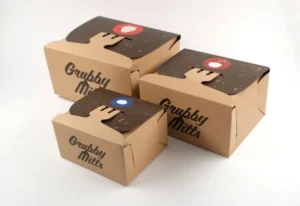
In today’s world, the importance of sustainability in packaging cannot be overstated. This part talks about the importance of making environmentally friendly choices when creating custom food packaging.
1. The Importance of Sustainability in Packaging
Sustainability has become a driving force in the packaging industry. It’s not merely a trend; it’s an imperative. The environmental impact of packaging materials is under scrutiny, making it crucial for businesses to prioritize sustainability.
Choosing sustainable packaging has far-reaching benefits. It reduces the carbon footprint, conserves resources, and minimizes waste. Customers who increasingly look for products that are in line with their environmental ideals find this to be appealing. Moreover, eco-friendly packaging enhances your brand’s reputation as a responsible and conscientious player in the market.
2. Eco-Friendly Materials and Design Choices
When it comes to custom packaging for food, the choice of materials is paramount. Choosing eco-friendly materials like recycled paper, biodegradable plastics, or sustainable wood pulp for food packaging is a good move.
Eco-conscious design choices further enhance sustainability. Consider minimalist designs that use less material, reducing waste. Incorporate elements like perforations or easy-to-remove labels, encouraging recycling. Explore ink options that are soy-based or water-based, minimizing chemical impact.
Embracing sustainable practices doesn’t mean compromising aesthetics or functionality. In fact, it can lead to innovative and eye-catching packaging solutions that set your brand apart.
Marketing Your Brand with Food Packaging
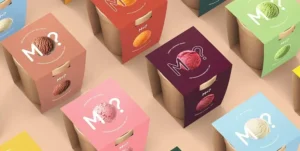
Custom made food boxes and custom printed food containers can boost your brand’s visibility and appeal in the competitive food industry. Let’s explore how to leverage custom packaging in your marketing strategy and make a splash on social media.
1. Leveraging Custom Packaging in Your Marketing Strategy
Your packaging is more than a vessel; it’s a canvas for storytelling. Incorporate your brand’s identity into every inch of it. Consider full color schemes, fonts, and imagery that resonate with your target audience. Your packaging should reflect the essence of your brand and your commitment to quality.
Highlight the unique features of your custom packaging in your marketing materials. Whether it’s the eco-friendly materials you’ve chosen or the innovative design, these details can be compelling selling points.
2. Showcasing Your Unique Packaging on Social Media
Social media platforms are ideal for showcasing your custom packaging. Post pristine pictures and videos of your goods in their attractive packaging. To reach more people and engage with them, use relevant hashtags.
Encourage user-generated content by inviting customers to share their experiences with your custom packaging. In order to build a sense of community and authenticity around your brand, share these posts on your social media platforms.
Incorporate packaging-related contests or challenges to encourage user participation and creativity. Your online presence is enhanced, and your brand’s reputation is strengthened as a result.
Customer Success Stories
Explore how businesses have used custom food packaging to boost their brands and achieve impressive success in real-life scenarios.
1. Real-Life Examples of Businesses Benefiting from Custom Food Packaging
Gourmet Bakery Delights: A local bakery known for its artisanal pastries decided to invest in customized packaging that mirrored the elegance of its products. Their decision to use eco-friendly materials not only aligned with their values but also resonated with eco-conscious customers. This move not only increased their sales but also garnered positive feedback, positioning them as a sustainable and premium brand.
Farm-to-Table Excellence: A farm-to-table restaurant prioritized sourcing local ingredients and wanted its packaging to reflect this commitment. They collaborated with a packaging supplier to design custom food boxes. These boxes featured images of the local farms and artisans they partnered with. The packaging not only told a story but also enhanced the brand’s authenticity, leading to a surge in customer loyalty.
2. How Customized Packaging Transformed Their Brands
In both cases, customized packaging played a pivotal role in brand transformation. It went beyond practicality, becoming a canvas for storytelling. The bakery’s eco-friendly and elegant packaging conveyed its values and quality. For the restaurant, packaging became a visual representation of their farm-to-table philosophy, creating a solid emotional connection with diners.
These examples illustrate that custom food packaging is not just a necessity; it’s a potent tool for brand elevation. It has the potential to enhance your brand’s identity, resonate with your target audience, and drive customer loyalty. The success stories of these businesses are a testament to the transformative power of packaging done right.
Frequently Asked Questions (FAQs)
Let’s delve into some common queries about custom food packaging and provide expert answers and advice.
Q: How can I determine if the chosen color, size, and shape are suitable for my food packaging?
Deciding if the color, size, and shape of your food packaging match your brand, target audience, and product’s practicality. To make wise choices for your packaging and satisfy your customers, you can do market research, get feedback, and test designs. These steps will help you showcase your brand effectively.
Q: What is the most commonly used type of food packaging in the food industry?
The most commonly used food packaging type varies depending on the specific food product and industry. Packaging options commonly include flexible options such as plastic pouches and bags. Additionally, there are rigid containers available, such as plastic or glass jars. These packaging options are preferred for a variety of food goods because of their adaptability and durability. The choice ultimately depends on factors like product shelf life, consumer convenience, and branding considerations.
Q: How does the quality of food get impacted by the packaging it is stored in?
Packaging can significantly influence the quality of food. Packaging protects food from things like moisture, oxygen, light, and contaminants that can make it worse. Proper packaging helps maintain freshness, flavor, and nutritional value, extending the product’s shelf life. Additionally, packaging can prevent physical damage during transportation and handling, ensuring that the food reaches consumers in the intended condition. Lousy packaging can cause food to spoil, lose quality, and be unsafe. It’s essential to choose suitable packaging materials and techniques for each food product.
Q: What are the key aspects of sustainability that should be considered when designing food packaging?
When creating sustainable food packaging, it is crucial to consider using eco-friendly materials. It is also essential to make the packaging recyclable and biodegradable. Additionally, it is crucial to think about the environmental impact of both the materials and the processes involved. Considering the entire life of the packaging, from production to disposal, ensures sustainable practices and reduces its carbon footprint.
Q: How can I ensure cost-efficiency while still providing adequate protection for my product in its packaging?
Striking a balance between cost-efficiency and product protection involves careful material selection, design optimization, and collaboration with packaging experts. Choose materials that protect and don’t cost too much. Design packaging that reduces waste and works well. This way, you can save money and keep products safe.
Wrap-Up
In the realm of modern business, the role of custom food packaging is undeniably significant. It’s not just about enclosing products; it’s about crafting an experience, telling a story, and building a brand. As we finish studying this vital aspect, let’s highlight its utmost significance and urge businesses to invest in customized packaging solutions.
Custom food packaging is the bridge between your brand and your customers. It’s the first touchpoint, the initial impression that can make or break a sale. It conveys your values, your commitment to quality, and your unique identity.
Investing in customized packaging is not an expense; it’s an investment in your brand’s future. It’s a statement of your dedication to customer satisfaction, sustainability, and creativity. It’s a tool that can set you apart in a crowded marketplace, foster customer loyalty, and drive business growth.
When working in the food industry, remember that custom food packaging is more than just a box. It’s an opportunity to showcase your brand’s creativity. Embrace it, wield it wisely, and watch it transform not just your products but your entire brand journey.
Resources and Next Steps
- ThinkInk Packaging is here to help you customize your food packaging. We provide resources for designing and ordering the ideal packaging solutions for your business:
- Online Packaging Suppliers: ThinkInk Packaging is a well-established online packaging supplier. We offer various custom options, including design templates, material choices, and order customization tools tailored to your specific needs.
- Graphic Design Software: If you plan to create your packaging design in-house, consider using graphic design software like Adobe Illustrator or Canva. These tools offer versatile design capabilities, and ThinkInk Packaging can assist with template integration.
- Sustainability Guides: If eco-friendliness is a priority, ThinkInk Packaging can guide sustainable packaging materials and practices, aligning perfectly with your commitment to a greener future.
- Packaging Samples: ThinkInk Packaging offers sample packs, allowing you to physically assess materials and designs before making a final decision. This hands-on approach ensures you’re delighted with your choice.
- Industry Forums and Communities: Join industry-related online forums and groups where ThinkInk Packaging specialists frequently discuss packaging developments and best practices. Their insights can prove invaluable as you navigate your packaging journey.
Now, with ThinkInk Packaging by your side, it’s time to take the following steps toward customizing your packaging solutions. Start by defining your packaging goals and brand identity. Consider your budget and sustainability preferences.
Whether you’re a small startup or an established business, ThinkInk Packaging understands that custom food packaging can elevate your brand and leave a lasting impression on your customers. Embrace the possibilities, and watch your packaging become a powerful tool in your business’s success story.
Hot News
Need For Some Help ?
If you don’t see what you need, please contact us and we’ll do our best to accommodate your needs.
Phone
+1-816-875-6317
support@thinkinkpackaging.com




